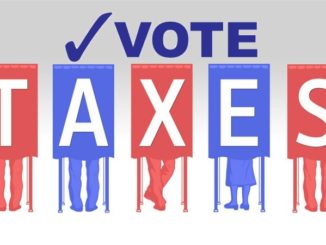Wyoming’s $700 Million Education Deficit
Lawmakers consider increasing sales taxes, cutting activities to solve school budget woes
A group of lawmakers recently suggested consolidating school districts, cutting money for student activities or increasing sales tax as a way to help solve the state’s more than $700 million education deficit.
The ideas are part of a report by the Joint Education Committee subcommittee. They identify five general areas where the Legislature could address the funding shortfall Wyoming faces in the next two-year budget cycle. Those areas would ideally yield $80 million in savings or revenues a year. The five areas are:
- Cutting or changing funding for school districts and examining how much state agencies receive from the education account
- Tapping into the Legislature’s rainy day fund and the School Foundation Program Reserve Account
- Examining existing funding streams, like the percentage of federal mineral royalties that pay for Wyoming education
- Identifying spending policies, like changing the balance of education accounts to guarantee more investment income
- Finding “revenue enhancements,” like increasing the sales tax, to balance revenue shortfalls
The report stresses that any cuts could be instituted gradually, a concern for many superintendents who have expressed anxiety over having to contend with large cuts on short notice.
The report comes nine days after the co-chairmen of the Joint Education Interim Committee, Republicans Sen. Hank Coe of Cody and Rep. David Northrup of Powell, decided not to bring before the committee three bills that would cut education and increase class sizes. Instead, education lawmakers decided to form a subcommittee to begin looking at the funding crisis from all angles, rather than examining pieces of the funding model.
Northrup said Wednesday that the suggestions for cuts in the report exist outside of the model that’s used to determine education funding for districts. Lawmakers wanted to stay away from tinkering too much with that system, which was built in the wake of a landmark Wyoming Supreme Court in the 1990s.
For more than a decade, public education in Wyoming has been paid for through the evidence-based model. But for years, legislators have been funding above the level that model guarantees for each district, adding ornaments to a Christmas tree, as Coe has described it.
The energy downturn has hit education funding hard, though, and a report released to lawmakers in November estimated a $1.8 billion shortfall by the end of the 2022 fiscal year.
Gov. Matt Mead and lawmakers have said the crisis is so significant that the state can’t cut its way out. The subcommittee’s report gives a variety of options to address the problem. Northrup said that these are suggestions by lawmakers. He added that a primary goal of releasing the report is to get feedback from educators, districts and even teachers. At various points, the report suggests:
� Consolidating Wyoming’s 48 school districts into 23, one per county, with no schools being closed. The report estimates $7.5 million in annual savings. In the past, legislators have had a lukewarm response to consolidation, fearing it would lead to school closures. But Coe has stressed in the past that such a move would consolidate only administrative functions.
� Cutting central office administrative salaries by 10 percent would save $3.4 million per year. Many districts, including Natrona County School District, are already in the process of shrinking; superintendent Steve Hopkins has said Natrona County’s central office has eliminated more than 20 jobs recently.
� Halving funding for student activities, sports and the arts, and increasing fees to balance activity budgets. Such a move could save $15 million annually, the report says. Northrup said much of the activities discussion centered around sports, including whether people should be charged money to attend sporting events.
� Reducing the number of professional development days from 10 to five, which would cut the number of school operation days to 180. That was the number of days prior to 2006-07. Such a move could save $21.6 million annually.
� Eliminating the instructional facilitator program, which would save roughly $22 million a year. Northrup said instructional facilitators are like lead teachers who help schools institute a different teaching style.
� Increasing mill levies assessed for education, which could yield an additional $20 million per mill per year.
� Increase the statewide sales tax, which would bring in $150 million per cent increase annually.
Northrup acknowledged that passing a tax in Wyoming is difficult, and should any tax increase be instituted, it would likely not go into effect until cuts in education were implemented. That way, Wyomingites could see that educators are doing their share before new taxes are instituted.
The report should educate other legislators, education officials and others about what steps lawmakers are examining to solve the crisis, Northrup said. He stressed that legislators want feedback on the report and that the feedback will play a role in crafting a bill early in the upcoming legislative session.
He said the House Education Committee will sponsor the bill, with hopes that the committee’s Senate counterpart will co-sponsor it. Lawmakers are trying to be as open as possible in this process, he said.
“It’s going to be hard for everybody, you know?” he said.
H/T Billings Gazette






Just screw us Wyoming taxpayers with another percent on the sales tax.. maybe hike our property taxes… impose a tax on our internet purchases. We’re sheep, we won’t complain as you shear us.